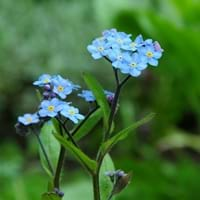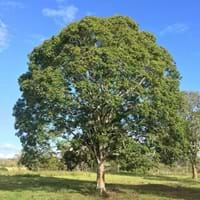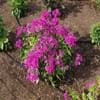Life Span
Annual and Perennial
Perennial
Type
Flowering Plants, Shrubs
Tree
Origin
Eastern Asia
Southeastern Asia
Types
Bigleaf hydrangea, Hortensia, Smooth hydrangea, Oakleaf hydrangea, Annabelle
Nilambur teak, Adilabad teak
Habitat
Fields, gardens, meadows, rocky outcrops, waste ground, yards
Hillside, tropical environments
USDA Hardiness Zone
Not Available
10-15
AHS Heat Zone
8 - 1
12-10
Habit
Clump-Forming
Upright/Erect
Flower Color
Blue, White
White, Ivory
Flower Color Modifier
Bicolor
Bicolor
Fruit Color
Not Available
Tan, Sandy Brown
Leaf Color in Spring
Green, Gray Green
Green, Light Green
Leaf Color in Summer
Green, Gray Green
Green
Leaf Color in Fall
Green, Gray Green
Green
Leaf Color in Winter
Light Green
Not Available
Leaf Shape
Lanceolate
Oval
Plant Season
Spring, Summer
Not Available
Sunlight
Full Sun, Partial Sun
Full Sun, Partial Sun
Type of Soil
Loam
Loam, Sand
The pH of Soil
Acidic, Neutral
Acidic, Neutral
Soil Drainage
Well drained
Well drained
Bloom Time
Early Spring, Spring, Late Spring, Early Summer, Summer, Late Summer
Summer, Late Summer, Early Fall
Tolerances
Not Available
Not Available
Where to Plant?
Ground
Ground
How to Plant?
Divison, Seedlings
Seedlings, Transplanting
Plant Maintenance
Medium
Medium
Watering Requirements
Do Not over Water
Water daily during growing season
In Summer
Lots of watering
Lots of watering
In Spring
Moderate
Moderate
In Winter
Average Water
Average Water
Soil pH
Acidic, Neutral
Acidic, Neutral
Soil Type
Loam
Loam, Sand
Soil Drainage Capacity
Well drained
Well drained
Sun Exposure
Full Sun, Partial Sun
Full Sun, Partial Sun
Pruning
Remove damaged leaves, Remove dead branches, Remove dead leaves
Remove dead or diseased plant parts, Remove deadheads, Requires very little pruning
Fertilizers
All-Purpose Liquid Fertilizer
All-Purpose Liquid Fertilizer
Pests and Diseases
Red blotch
Pests and diseases free
Plant Tolerance
Drought
Not Available
Flower Petal Number
Single
Single
Foliage Texture
Medium
Coarse
Foliage Sheen
Matte
Matte
Attracts
Bees, Flies
Birds, Woodpeckers
Allergy
Chest tightness, Diarrhea, Dizziness, Nausea, Vomiting
Eye irritation, Red eyes
Aesthetic Uses
Beautification, Cottage Garden, Ground Cover, Showy Purposes
Cottage Garden
Beauty Benefits
Not Available
For treating wrinkles, Making cosmetics
Edible Uses
Yes
Sometimes
Environmental Uses
Air purification
Absorbs greenhouse gases, Nesting sites for birds, Shadow Tree
Medicinal Uses
Fever, Kidney problems, Urinary tract problems
Anemia, Inflammation, Swelling
Part of Plant Used
Flowers, Root
Flowers, Root bark
Other Uses
Culinary use, Used as Ornamental plant
Used in construction, Used in pencil industry, Wood is used for making furniture
Used As Indoor Plant
No
No
Used As Outdoor Plant
Yes
No
Garden Design
Bedding Plant, Cottage garden, Edible, Hanging Basket, Wildflower
Feature Plant, Shade Trees, Tropical
Botanical Name
Myosotis arvensis
TECTONA grandis
Common Name
Forget-Me-Not
East Indian Oak, Teak
In Hindi
Forget-Me-Not
सागौन
In German
Forget-Me-Not
Teak
In French
Forget-Me-Not
Teak
In Spanish
Arce japonés
Teak
In Greek
Forget-Me-Not
Teak
In Portuguese
Forget-Me-Not
Teak
In Polish
Forget-Me-Not
Teak
In Latin
Forget-Me-Not
Teak
Phylum
Magnoliophyta
Magnoliophyta
Class
Magnoliopsida
Magnoliopsida
Family
Boraginaceae
Verbenaceae
Clade
Not Available
Angiosperms, Asterids, Eudicots
Tribe
Not Available
Not Available
Subfamily
Not Available
Not Available
Difference Between Field Forget Me Not and Teak
If you are confused whether Field Forget Me Not or Teak are same, here are some features about those plants to help you choose better. Many people think that these two plants have the same characteristics, but one can see Field Forget Me Not and Teak Information and learn more about it. Fertilizers required for proper growth of Field Forget Me Not are All-Purpose Liquid Fertilizer, whereas for Teak fertilizers required are All-Purpose Liquid Fertilizer. Hence, one should know the basic difference between Field Forget Me Not and Teak if you are planning to have them in your garden to enhance its beauty.
<
Flowering PlantsImportance of Field Forget Me Not and Teak
Want to have the most appropriate plant for your garden? You might want to know the importance of Field Forget Me Not and Teak. Basically, these two plants vary in many aspects. Compare Field Forget Me Not and Teak as they differ in many characteristics such as their life, care, benefits, facts, etc. Every gardener must at least have the slightest clue about the plants he wants to plant in his garden. Compare their benefits, which differ in many ways like facts and uses. The medicinal use of Field Forget Me Not is Fever, Kidney problems and Urinary tract problems whereas of Teak is Anemia, Inflammation and Swelling. Field Forget Me Not has beauty benefits as follows: Not Available while Teak has beauty benefits as follows: Not Available.
Compare Facts of Field Forget Me Not vs Teak
How to choose the best garden plant for your garden depending upon its facts? Here garden plant comparison will help you to solve this query. Compare the facts of Field Forget Me Not vs Teak and know which one to choose. As garden plants have benefits and other uses, allergy is also a major drawback of plants for some people. Allergic reactions of Field Forget Me Not are Chest tightness, Diarrhea, Dizziness, Nausea and Vomiting whereas of Teak have Eye irritation and Red eyes respectively. Having a fruit bearing plant in your garden can be a plus point of your garden. Field Forget Me Not has no showy fruits and Teak has no showy fruits. Also Field Forget Me Not is not flowering and Teak is not flowering . You can compare Field Forget Me Not and Teak facts and facts of other plants too.





